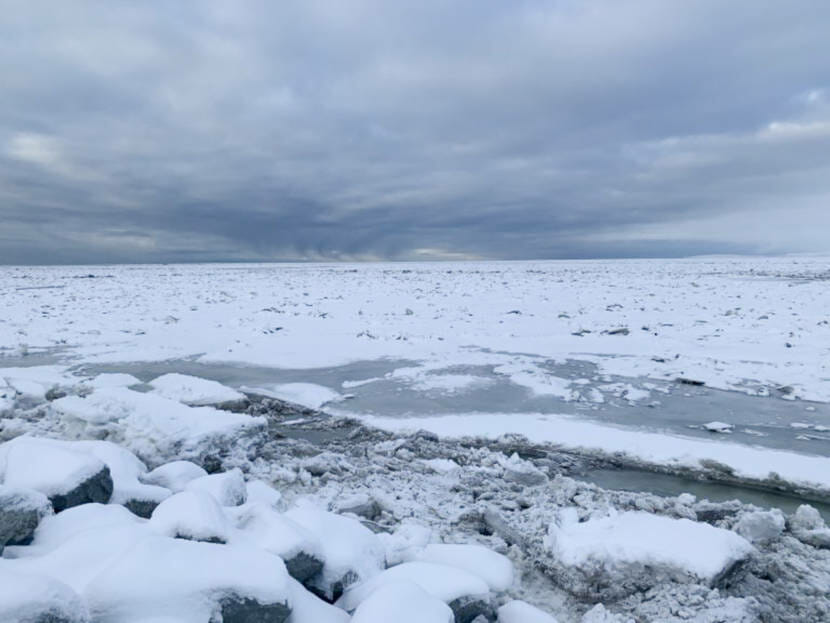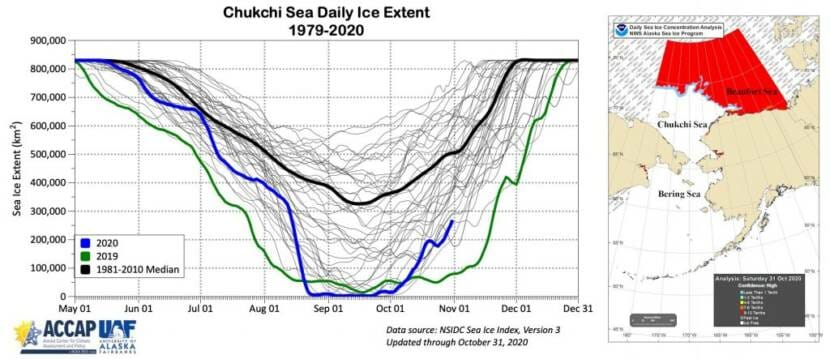
Researchers track the extent of Arctic sea ice every year — essentially, how far it extends from the North Pole. The Arctic sea ice pack is smallest in the fall, after melting and receding all summer and right before it starts growing again through the winter.
There’s more sea ice this fall in the Chukchi Sea than there was at this time last year. But the ice closer to Alaska’s shores is lagging behind.
Rick Thoman, a climatologist with the International Arctic Research Center in Fairbanks, broke the news about the amount of ice in the waters off the coast of Northwest Alaska this year.
“We have much more, about three times more ice in the Chukchi Sea than we did last year,” Thoman said.
Last year saw the lowest fall sea ice extent in the Chukchi Sea on record. Thoman says this year’s sea ice extent is still way below the historical average, and most of this year’s ice is in waters north of Alaska.

“When we talk about the Chukchi Sea here, we’re talking basically to about 78 North,” Thoman said, “so that’s hundreds of miles north of Utqiagvik.”
In the southern Chukchi Sea, Thoman says there’s still a lot of open water. In fact, even though there’s more ice across the entire Chukchi, the ice near Kotzebue and Point Hope is actually weaker than last year.
“Kotzebue Sound is mostly open water at this point,” Thoman said. “So especially on the Russian side, we have even less ice than we had last year at this time.”
Thoman says this year’s forecast calls for storms throughout the coast of Northwest Alaska. Stormy seas make it difficult for sea ice to form.
“We’re going to have a turn towards warmer stormier weather in the Bering and Southern Chukchi Sea,” Thoman said. “We’re going to be very late with starting to form ice south of Point Hope. And we could easily be looking at no ice in the open Chukchi Sea, north of the Bering Strait, well into December.”
Thoman says historically, that ice was formed by mid-November or even as early as October.